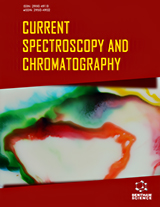Abstract
Most current methods for determining protein carbonyl content are based on the reaction of carbonyl groups with 2,4-dinitrophenylhydrazine (DNPH) to form 2,4-dinitrophenylhydrazone derivatives, which can then be detected and quantitated spectrophotometrically or immunochemically. In this article, we evaluate different quantitative and semi-quantitative techniques for measuring protein carbonylation. We assessed the sensitivity and accuracy of these techniques using both test samples and tissue extracts. We found that absorbance based quantitation of protein phenylhydrazone content is prone to experimental variation, often generating unreliable results. A previously described microplate ELISA method enabled very sensitive and accurate measurement of the carbonyl content of mixtures of reduced and oxidized BSA but proved to be quite insensitive when complex biological samples were assayed. Immunochemical detection and quantitation of DNPH derivatized samples spotted onto nitrocellulose membrane or processed using unifilter devices often produced inconsistent results. The difficulties observed with each of these methods appear to be associated with the presence of unreacted DNPH and nonprotein carbonyl. We found that short SDS-PAGE of derivatized sample efficiently removes these confounding substances and enables sensitive and reliable immunochemical detection of protein carbonyl after electrophoretic transfer of the proteins onto nitrocellulose membrane.
Keywords: Carbonylation assay, Protein oxidation, C. elegans
Current Analytical Chemistry
Title: Evaluation of Different Methods for Assaying Protein Carbonylation
Volume: 3 Issue: 2
Author(s): Filip Matthijssens, Bart P. Braeckman and Jacques R. Vanfleteren
Affiliation:
Keywords: Carbonylation assay, Protein oxidation, C. elegans
Abstract: Most current methods for determining protein carbonyl content are based on the reaction of carbonyl groups with 2,4-dinitrophenylhydrazine (DNPH) to form 2,4-dinitrophenylhydrazone derivatives, which can then be detected and quantitated spectrophotometrically or immunochemically. In this article, we evaluate different quantitative and semi-quantitative techniques for measuring protein carbonylation. We assessed the sensitivity and accuracy of these techniques using both test samples and tissue extracts. We found that absorbance based quantitation of protein phenylhydrazone content is prone to experimental variation, often generating unreliable results. A previously described microplate ELISA method enabled very sensitive and accurate measurement of the carbonyl content of mixtures of reduced and oxidized BSA but proved to be quite insensitive when complex biological samples were assayed. Immunochemical detection and quantitation of DNPH derivatized samples spotted onto nitrocellulose membrane or processed using unifilter devices often produced inconsistent results. The difficulties observed with each of these methods appear to be associated with the presence of unreacted DNPH and nonprotein carbonyl. We found that short SDS-PAGE of derivatized sample efficiently removes these confounding substances and enables sensitive and reliable immunochemical detection of protein carbonyl after electrophoretic transfer of the proteins onto nitrocellulose membrane.
Export Options
About this article
Cite this article as:
Matthijssens Filip, Braeckman P. Bart and Vanfleteren R. Jacques, Evaluation of Different Methods for Assaying Protein Carbonylation, Current Analytical Chemistry 2007; 3 (2) . https://dx.doi.org/10.2174/157341107780361727
| DOI https://dx.doi.org/10.2174/157341107780361727 |
Print ISSN 1573-4110 |
| Publisher Name Bentham Science Publisher |
Online ISSN 1875-6727 |
 8
8
- Author Guidelines
- Bentham Author Support Services (BASS)
- Graphical Abstracts
- Fabricating and Stating False Information
- Research Misconduct
- Post Publication Discussions and Corrections
- Publishing Ethics and Rectitude
- Increase Visibility of Your Article
- Archiving Policies
- Peer Review Workflow
- Order Your Article Before Print
- Promote Your Article
- Manuscript Transfer Facility
- Editorial Policies
- Allegations from Whistleblowers
- Announcements
Related Articles
-
Thrombolytic Treatment of Cardiac Myxoma-Induced Ischemic Stroke: A Review
Current Drug Safety Physiological Role of Peroxisome Proliferator-Activated Receptors Type Alpha on Dopamine Systems
CNS & Neurological Disorders - Drug Targets Neuroglobin and Estrogen Receptors: A New Pathway of Cell Survival and Cell Death Balance
Immunology, Endocrine & Metabolic Agents in Medicinal Chemistry (Discontinued) Snake Venom Disintegrins: An Overview of their Interaction with Integrins
Current Drug Targets Editorial [Hot Topic: New Approaches to the Treatment of Inflammatory Disorders (Guest Editor: Mark L. Richards)]
Current Topics in Medicinal Chemistry Preface
Current Cardiology Reviews Effects of Cichorium Intybus Linn on Blood Glucose, Lipid Constituents and Selected Oxidative Stress Parameters in Streptozotocin-Induced Diabetic Rats
Cardiovascular & Hematological Disorders-Drug Targets Mechanisms of the Penetration of Blood-Borne Substances into the Brain
Current Neuropharmacology Vitamin D Deficiency and Oxidative Stress in Type 2 Diabetic Population of India
Cardiovascular & Hematological Agents in Medicinal Chemistry The Molecular Basis of Memantine Action in Alzheimers Disease and Other Neurologic Disorders: Low-affinity, Uncompetitive Antagonism
Current Alzheimer Research A Translational View of Peptide Treatment of Neurological Disorders
Current Medicinal Chemistry Direct Thrombin Inhibitors for the Prevention of Venous Thromboembolism after Major Orthopaedic Surgery
Current Pharmaceutical Design Desirable Properties for 3rd Generation Cyclooxygenase-2 Inhibitors
Mini-Reviews in Medicinal Chemistry Vitamin D and the Metabolic Syndrome
Current Vascular Pharmacology New Drug-Eluting Stent Technologies
Current Cardiology Reviews Editorial (Hot Topic: Treatment of Atherosclerosis as an Inflammatory Disease)
Current Pharmaceutical Design Direct Thrombin Inhibitors for Treatment of Heparin Induced Thrombocytopenia, Deep Vein Thrombosis and Atrial Fibrillation
Current Pharmaceutical Design Nanomedicine against Alzheimer’s and Parkinson’s Disease
Current Pharmaceutical Design Influence of Pulsing Electromagnetic Field Therapy on Gene Expression in Muscle Cells, Peripheral Circulation, and Metabolic Factors in Aging Adults
Current Chemical Biology Does Daily Dialysis Improve Hypertension in Chronic Haemodialysis Patients?
Current Hypertension Reviews


























